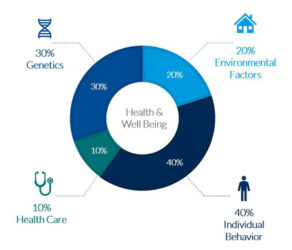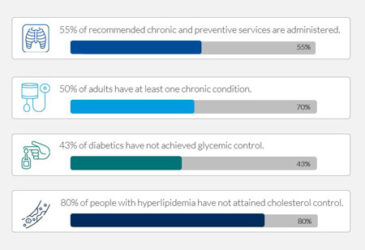
In this series, we focus on best practices for measuring the impact of eConsults on practice performance and patient care:
- Provider Adoption
- Patient Access
- Clinical Quality
- Patient Benefits
- Practice Cost Savings
This blog will focus on eConsult patient benefits, including cost savings, less travel, reduced time off work, faster diagnosis and treatment, and improved outcomes.
eConsults deliver so many patient benefits. Patients save money with fewer copays, less travel expenses and reduced time off work. Patient satisfaction improves when diagnosis and treatment are delivered quickly. Equal access to specialty care increases because social and geographic challenges related to care are reduced. Outcomes also improve when patients receive treatment fast, avoid expensive emergency care, and experience better care continuity.
eConsults save patients money
Visiting a specialist is expensive, and not visiting the specialist can be catastrophic for the patient. The patient saves at least $120 per avoided referral—$40 per visit over the 3 visits typically needed to receive a diagnosis and treatment. Primary care accounts for only 5% of total healthcare costs, while specialty care contributes to 16.5%. Treatment in the primary care setting avoids copays and care delays that increase costs.
The trick is to provide the right amount of specialty care in the right setting.
Healthcare Finance News reports that $200 billion, or 25% of healthcare costs, are for unnecessary tests and treatments. This figure doesn’t include unnecessary emergency room visits, multiple visits to the clinic because a patient can’t get an appointment quickly or increased costs due to untreated conditions.
Let’s eliminate these unnecessary costs by consulting with an eConsult specialist to determine exactly what tests are needed and reduce duplicate tests at the ER or specialist’s office by avoiding these high-cost care settings whenever possible.
Copays aren’t the only cost to the patient that can impact access to specialty care. Will the patient need additional time off work, childcare, or travel a great distance to see a specialist? eConsults can minimize these costs as well.
We can estimate these costs:
- Patient Miles Saved by avoiding a referral is 45 Miles.
- Patient Hours Saved just in travel, the waiting room and during this specialist visit is 4.85 hours.
Taking time off work is difficult for those with lower incomes, irregular hours or the elderly who need a caregiver to transport them to a specialist visit.
These calculations depend on the proximity and availability of specialty care in the patient’s area. Rural patients often travel farther for care. Urban patients are more likely to struggle with Social Determinants of Health, such as economic stability, lack of reliable transportation, or religious, language and literacy barriers.
Patient Savings on Childcare is an often-overlooked challenge. We estimate this cost at $17.50 per hour for the 4 plus hours needed to attend the specialist’s appointments. That’s $84.88 of childcare per avoided referral. A considerable amount of money for many of the patients we serve.
eConsults increase patient satisfaction
Reducing the cost and improving the convenience of specialty care using eConsults can directly impact quality metrics. Standard patient satisfaction metrics can be used to evaluate the eConsult patient experience.
eConsult patient benefits include increased effectiveness because you obtain subspecialty advice before developing the patient’s treatment plan. The PCP can’t possibly keep up with the changing standards of care across every specialty. Patient satisfaction increases because they can receive care in the PCP setting. This improves the patient’s experience and reduces stress for the patient waiting for a diagnosis.
By coordinating with remote specialists, patients can benefit from specialty advice to access screenings and manage chronic conditions no matter where they are located. eConsults are frequently used for medication reconciliation and non-emergent conditions. If the patient is prediabetic or has high blood pressure, the PCP can consult with a specialist when the symptoms first appear and adjust the treatment plan with advice from a specialist without delaying care. eConsults enable more efficient use of resources – if the patient doesn’t see the specialist, they won’t get the care or end up in the ER. This impacts symptom management and patient outcomes, improving patient satisfaction.
With timely diagnosis and treatment with the PCP, the risk of contraindication is lower because care is centralized. Plus, eliminating the wait for an appointment with a specialist and the appointment itself increases patient satisfaction.

HEDIS
- Effectiveness of care
- Access/availability of care
- Experience of care
- Reduce wait & follow-up
- Resource utilization

CMS Star Rating
- Staying healthy (screenings, tests, and vaccines)
- Managing chronic conditions
- Plan responsiveness (getting members services)

Clinical Quality
- Patient safety
- Care coordination and clinical effectiveness
- Efficient use of resourceS

CAHPS
- Timely appointments, care, and information
- Coordination of patient care
- Overall rating of the provider
eConsults improve equal access to specialty care
 Identifying health inequities can help the practice manage risk and reduce the burden of care for your patients. Increase access for patients who face challenges associated with:
Identifying health inequities can help the practice manage risk and reduce the burden of care for your patients. Increase access for patients who face challenges associated with:
- Genetics, including populations that require additional preventive screening.
- Environmental Factors, like economic stability and transportation.
- Health Care — Patients without insurance and covered by Medicare or Medicaid.
- Individual Behavior.
Your patients’ health is also determined by:
- Access to jobs and food
- Support available in their homes
- Work safety
Sixty percent of health-related outcomes are directly correlated to the patient’s social, environmental, and individual behavior. These inequalities are worse when patients are:
- Minority
- Low-income
- Speak limited English
- Live in rural areas
To measure and reduce inequality driven by social determinants of health:
- Identify which patients are most likely to be readmitted to the hospital because of limited access to transportation and/or lack of family or social support.
- Determine if language, disability or region will impact your patient.
- Consider appropriate health monitoring, preventive screenings, and vaccines.
Offering eConsults and other services, like vaccines, in your office can reduce inequality for these patients.
eConsults improve patient outcomes
 eConsults enables the PCP to offer a diagnosis and treatment plan an average of 19 days sooner than a referral. Most eConsults responses are sent back to the PCP within 4-6 hours. AristaMD clients report a 30% reduction in ED visits, hospitalizations and readmissions after eConsult implementation. Measuring these improvements can be as simple as focusing on a few metrics within your patient population:
eConsults enables the PCP to offer a diagnosis and treatment plan an average of 19 days sooner than a referral. Most eConsults responses are sent back to the PCP within 4-6 hours. AristaMD clients report a 30% reduction in ED visits, hospitalizations and readmissions after eConsult implementation. Measuring these improvements can be as simple as focusing on a few metrics within your patient population:
- Hospital admissions and readmission.
- ED usage.
- And referral volume, which should decline.
You can also boost the health of your patients by increasing compliance and care continuity.
- With the advice of an expert, your eConsult patient can benefit from treatment and offer follow-up care in your office.
- Receiving a treatment plan from a familiar and trusted provider increases the patient’s likelihood to comply.
- Compliance and continuity are reduced when patients fail to make or attend specialist appointments. Only 51% of referrals are scheduled and attended within 90 days.
- Care continuity is simplified with an eConsult. You always receive diagnostic guidance and treatment advice when using an eConsult.
Referral volume is also an appropriate metric for measuring compliance and continuity of care.
Compliance can also be measured by tracking key conditions within the population you serve:
- Preventive care: Patients receive only 55% of recommended chronic and preventive services.
- Chronic Diseases:
- About one-half of US adults have at least 1 chronic condition.
- 43% of people with diagnosed diabetes have not achieved glycemic control.
- More than 80% of hyperlipidemia have not attained cholesterol control.
Measuring improvements for patients with these conditions can demonstrate the value of your eConsult program and also indicate a future reduction in high-cost utilization.
